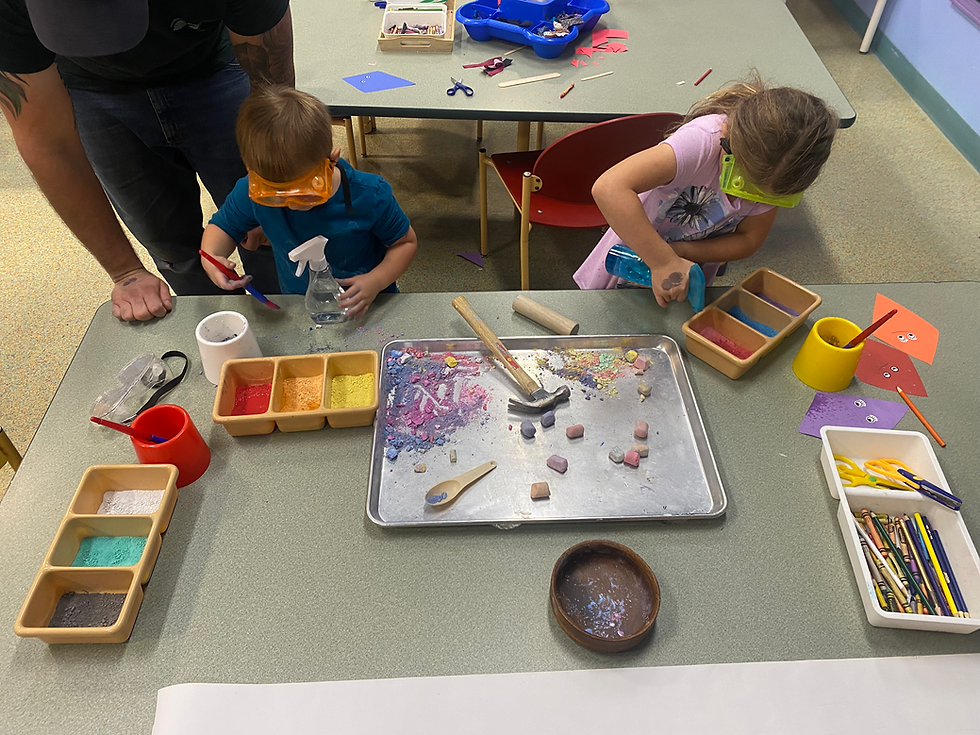Exhibit Design and Preschoolers’ Peer Relationship Skills
- adamwoodworth7
- Jun 13
- 2 min read

Children share art supplies to create kites. A child serves up a “meal” for their peer. A child carefully builds a block structure until another child adds the final piece that topples the tower. These are all possible encounters that happen in a children’s museum. Through play in intentionally designed environments, young children have opportunities to negotiate social settings, regulate their own behaviors, and practice skills for socializing with peers and caregivers.
But how are children’s museums unique? Previous research has shown that children demonstrated more social and emotional behaviors while playing in children’s museums as compared to non-museum sites such as public playgrounds (Luke et al, 2022). To expand on this research, the focus moved to potential differences of exhibit design and how those differences impact social and emotional behaviors, and specifically peer relationship skills.
Our research team observed 1,179 preschoolers in 12 children’s museums across the country. The team used an established observation checklist to tally the frequency of social and emotional behaviors in three different exhibit conditions (loose parts play, scenario-based/pretend play, and collaborative play). The measure tracked a range of behaviors including children’s social interaction skills, empathy, and prosocial behaviors.
61 observations were completed at the Children’s Museum in Oak Lawn. We observed preschool aged children playing in the Moo Café, art studio, and with the large blue blocks. Children were observed for up to 10 minutes.
Children smiled, got frustrated, solved problems, and found ways to work together in all three exhibit styles. However, there were some differences. Children showed more skills such as leading play, joining play, and following directions in collaborative and loose parts play. They also demonstrated more turn taking and cooperating behaviors in these spaces.
Collaborative exhibits provide opportunities for children to work together, loose parts exhibits provide materials and tools for play, and pretend play provides children with scripts and materials to explore roles. Each type of exhibit creates opportunities for rich, child-directed play. However, this study suggested that the less scripted spaces may provide children with more opportunities to figure out how to play with other children and with members of their own group. Museum exhibits provide the space, materials, and potential play partners to have fun and learn.
If you are interested in learning more, please contact Dr. Nicole Rivera, North Central College, Department of Psychology & Neuroscience, nrrivera@noctrl.edu.
Luke, J. J., Brenkert, S., & Rivera, N. (2022). Preschoolers’ social emotional learning in children’s museums and community playgrounds. Journal of Early Childhood Research, 20(2), 229-241.
Luke, J. J., Warmer, S., Rivera, N., Nelson, K. R., Windleharth, T., Tung, A., ... & Zhi, M. (2025). The Effects of Exhibit Design on Preschoolers’ Peer Relationship Skills in Children’s Museums. Journal of Museum Education, 1-10.
.png)


